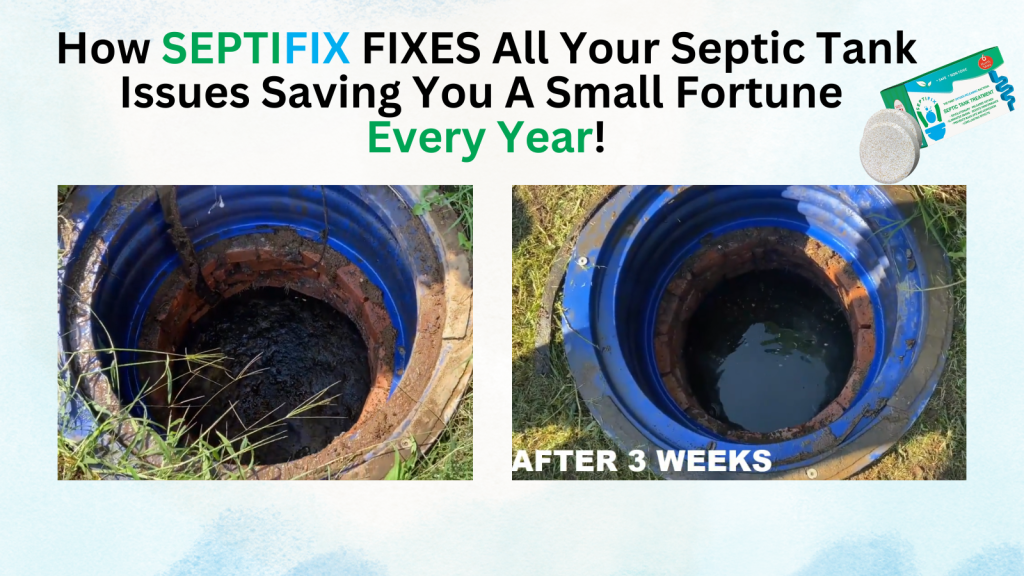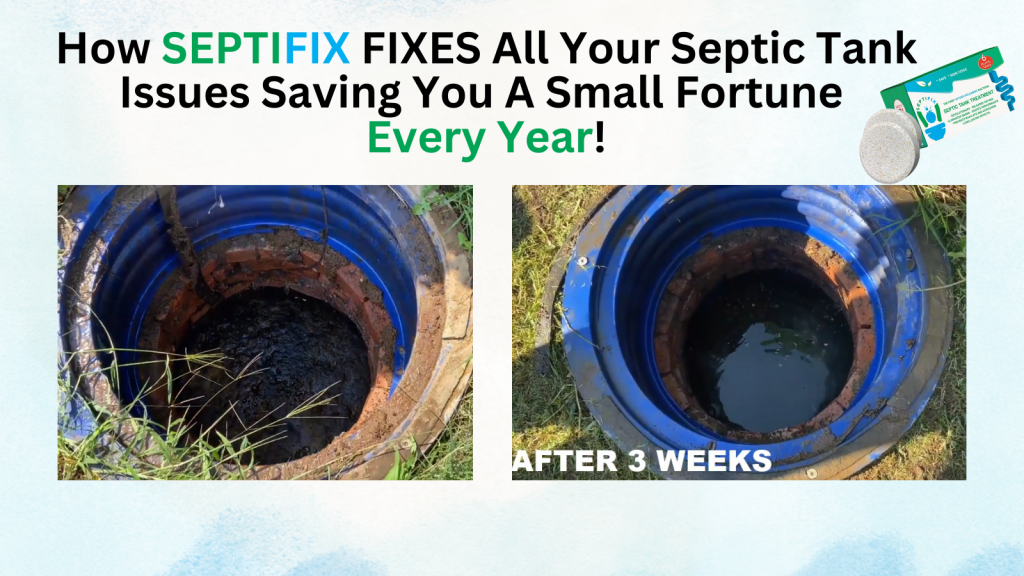Table of Contents
- Why Septic System Regulations Exist
- General Septic System Requirements
- Septic Inspection and Maintenance Rules
- State-by-State Regulation Differences
- Homeowner Responsibilities
- What Happens If You Violate Septic Codes?
- Contact Info and Resources
- Conclusion
- FAQS About Septic System Regulations
- Septifix
- Septic Permit Links by State
If you’re a homeowner relying on a septic system, understanding local and state septic system regulations is crucial. These rules govern everything from installation to inspections, helping to protect public health, groundwater quality, and property values. Whether you’re planning a new build, replacing an old tank, or just maintaining your system, being informed could save you from costly fines—or worse, a system failure.
Why Septic System Regulations Exist
Septic regulations are designed to ensure wastewater is treated safely and effectively. When systems are improperly installed or maintained, they can contaminate drinking water and nearby ecosystems. That’s why most states and counties have strict codes in place—especially for onsite wastewater treatment systems in rural or unsewered areas.
Key Goals of Regulation:
- Prevent pollution of groundwater and surface water
- Protect public health by avoiding exposure to untreated waste
- Ensure proper system design for soil type and household size
- Standardize inspections and maintenance
General Septic System Requirements
Most areas follow similar core principles, though the specifics vary by location.
Permitting and Approval
Before installing or repairing a system, you’ll likely need a septic permit from your county health department or environmental agency. This involves:
- Soil and percolation testing
- Site evaluation by a licensed contractor
- Submission of system design plans
- Approval of location and setbacks from wells, buildings, or water bodies
Pro Tip: If you’re buying land, always confirm whether it’s suitable for a septic system before closing.
Installation Regulations
Licensed professionals must usually install or upgrade systems. DIY installation is often prohibited, especially in states with strict codes like California, Florida, and Wisconsin.
Regulations often require:
- Specific tank sizing based on bedrooms or water usage
- Use of approved materials and certified designs
- Compliance with drainfield or mound system spacing and slope requirements
Septic Inspection and Maintenance Rules
Some states now require regular inspections to ensure systems remain in working order. Others only require checks during real estate transfers or refinances.
Common Inspection Triggers:
- Property sale
- New system installations
- Permit applications for repairs or upgrades
- Routine inspections every 3–5 years (varies by state)
In Maryland and parts of Massachusetts, for example, inspections are tied directly to transfer of property. Other states like Texas offer more relaxed rules but still recommend inspections every three years.
Maintenance Requirements
Some regions mandate pump-outs or maintenance contracts with certified providers. In Washington State, for instance, homeowners with alternative treatment systems must sign annual service agreements.
Tip: Even if not required, routine pumping (every 3–5 years) extends the life of your household septic system and protects your investment.
State-by-State Regulation Differences
Septic rules differ widely depending on geography, climate, and soil type. Here’s a snapshot of how some states handle regulation:
Florida:
- Overseen by the Department of Health
- New rules require nitrogen-reducing systems in vulnerable zones
- Regular inspections and pump-outs mandated in many counties
Texas:
- Regulated by the Texas Commission on Environmental Quality (TCEQ)
- Local Designated Representatives (DRs) issue permits and handle enforcement
- Homeowners may be allowed to install or repair systems with proper training
Wisconsin:
- Regulated through the Department of Safety and Professional Services
- All systems require an initial soil and site evaluation
- Mandatory maintenance tracking for certain system types
Check with your county health department for the exact rules in your area. Local ordinances may be more stringent than state guidelines.
Homeowner Responsibilities
If you own a septic system, you’re legally responsible for ensuring it meets local codes—even if it was installed before current laws existed.
What You’re Expected to Do:
- Keep records of permits, inspections, and maintenance
- Follow the required inspection or pump-out schedule
- Hire only licensed contractors for repairs or upgrades
- Report suspected leaks or system failures promptly
Failure to follow regulations can result in fines, mandatory repairs, or even condemnation of your property in extreme cases.
What Happens If You Violate Septic Codes?
Violating local septic inspection requirements or maintenance standards can have serious consequences:
- Fines or civil penalties
- Mandatory upgrades to your system
- Legal action from local environmental or health agencies
- Loss of property value or sale complications
Always consult a septic professional if you’re unsure whether your system is compliant. Regulations are complex and change over time.
Contact Info and Resources
Here are some helpful links and resources for staying compliant with septic system rules:
- EPA SepticSmart Program: National guidelines and homeowner tips
- National Onsite Wastewater Recycling Association: Educational tools and certified contractor listings
- Septic Regulations by State: EPA resource linking to each state’s requirements
- Local county health department websites (search “[Your County] septic permits”)
- OdorFreeSeptic.com: Educational content about septic maintenance and odor prevention
Conclusion
Understanding and following septic system regulations isn’t just about staying legal—it’s about protecting your health, your property, and the environment. From permit applications to inspection schedules, every step ensures your onsite sewage system runs safely and efficiently.
Take action today: Check with your local health department, schedule a system inspection, and stay up-to-date on your area’s requirements. If in doubt, hire a licensed professional to walk you through the process and keep your system in top shape.
FAQS About Septic System Regulations
What are the key federal regulations for septic systems in the United States?
Federal regulations, such as the Clean Water Act (CWA) and Safe Drinking Water Act (SDWA), set broad guidelines for wastewater management and groundwater protection. These regulations ensure that septic systems do not pollute water bodies or contaminate drinking water sources. The EPA provides guidance on wastewater treatment systems and works with states to establish specific rules that meet federal standards.
How do state and federal regulations differ when it comes to septic systems?
Federal regulations, set by the EPA under the CWA and SDWA, establish broad environmental protection standards, especially for water quality. State regulations are more specific and deal with the technical aspects of septic system installation, maintenance, and inspection. States enforce regulations within their jurisdictions, often tailoring them to local conditions like population density or environmental sensitivity.
What is the Clean Water Act and how does it impact septic system regulations?
The Clean Water Act (CWA) regulates the discharge of pollutants into U.S. waters and sets water quality standards. While it doesn’t directly regulate septic system installation, it requires systems to prevent untreated wastewater from discharging into surface waters. Many states require septic system inspections every 3 to 5 years, based on system type, local regulations, and environmental factors.
How often do septic systems need to be inspected according to state regulations?
Inspection frequency varies by state and local jurisdiction. Many states require septic system inspections every 3 to 5 years, based on system type, local regulations, and environmental factors. Some areas may require more frequent inspections, especially in regions with high water tables or sensitive ecosystems.
What are the main requirements for septic system installation under state regulations?
State regulations typically specify the size, type, and design of septic systems. Requirements include factors such as tank size, soil conditions, setbacks from wells and water sources, and proper drain field placement. Local health departments or environmental agencies issue permits, and licensed professionals must install systems according to these guidelines.
How does the Safe Drinking Water Act affect the maintenance of septic systems?
The Safe Drinking Water Act (SDWA) focuses on protecting public drinking water supplies. Property owners must maintain septic systems properly to prevent groundwater contamination, which could affect drinking water quality. States regulate septic systems to prevent harmful pathogens or pollutants from leaching into aquifers, which are often drinking water sources.
What are the consequences of not following septic system regulations in my state?
Non-compliance with septic regulations can result in fines, required repairs, or even the replacement of the entire septic system. Improper septic system maintenance can cause health hazards and environmental pollution, leading to lawsuits or local government action.
Are there federal guidelines for septic system design and installation?
The federal government sets broad water quality standards through the EPA, while state and local authorities determine specific septic system design and installation guidelines. The EPA offers technical resources and guidance on septic system design and maintenance to help states align with national standards.
What state agencies regulate septic systems and what are their responsibilities?
State agencies responsible for septic system regulation include state health departments and environmental protection agencies. For example, the Florida Department of Health manages septic system standards, while the Texas Commission on Environmental Quality (TCEQ) oversees Texas regulations. These agencies enforce state regulations, issue permits, and ensure compliance with local standards for system installation, inspections, and maintenance.
How can I find specific septic system regulations for my state or local area?
To find specific regulations, visit your state’s health or environmental agency website for septic system details. Local health departments handle permits, inspections, and provide county-specific guidelines.
Directory | West Virginia Septic Service Providers : Best Professionals
Winter Pumping: Should You or Shouldn’t You?
Septic Installer Registration in Bay County, Michigan
Sustainable Materials for Septic Systems: Eco-Friendly Solutions
DIY Septic Tank Installation: A Complete Guide for Homeowners
Directory | Washington Septic Service Providers | Part 2
Directory | Washington Septic Service Providers | Part 1
DIY Repairs Are Always Cheaper
Septifix











